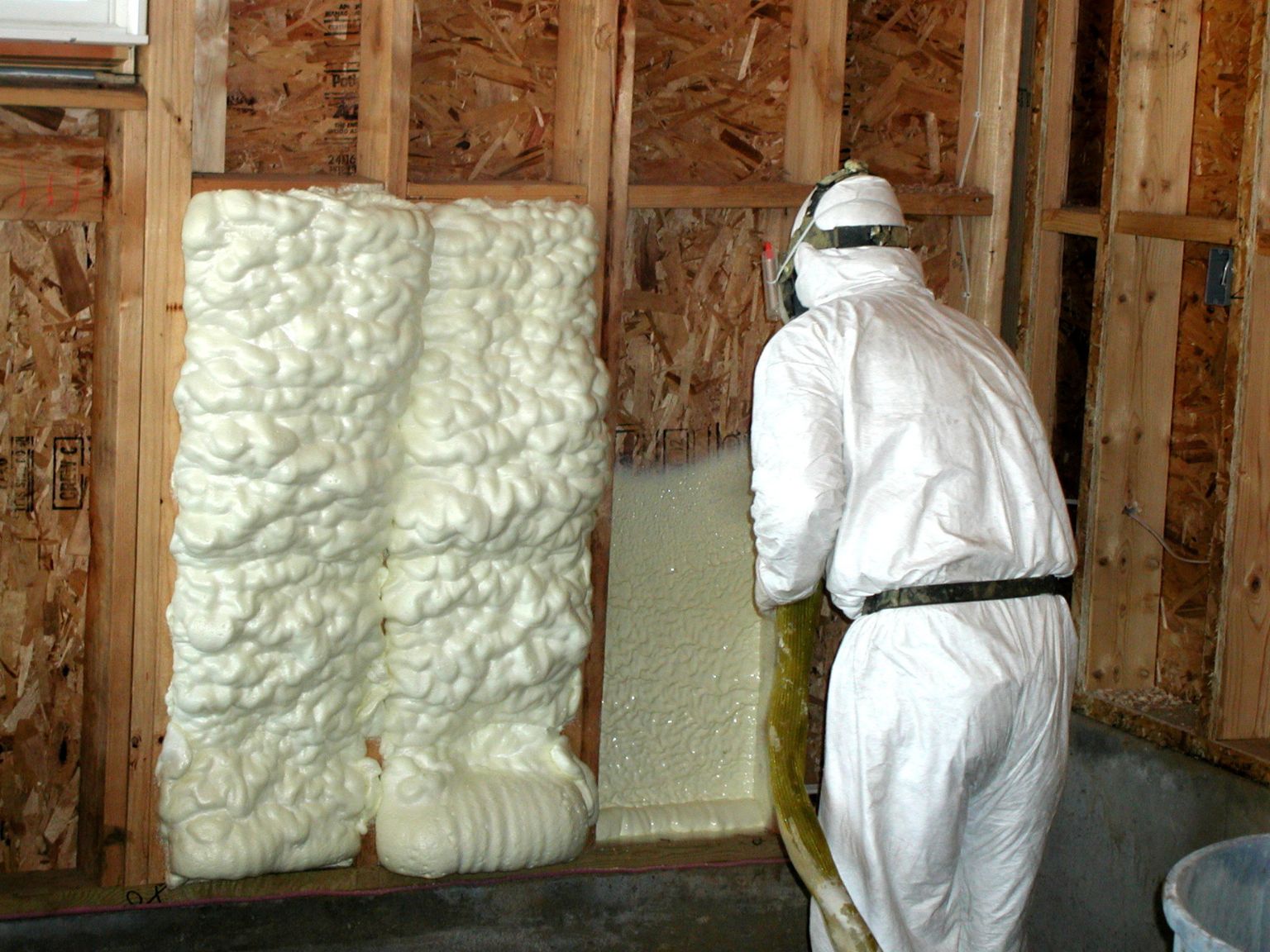

Articles
What Is Closed Cell Foam Insulation
Modified: January 8, 2024
Discover the benefits of closed cell foam insulation from our informative articles. Learn how it can improve energy efficiency and provide superior insulation for your home.
(Many of the links in this article redirect to a specific reviewed product. Your purchase of these products through affiliate links helps to generate commission for Storables.com, at no extra cost. Learn more)
Introduction
When it comes to insulating your home or any other building, there are various options to consider. One highly effective choice is closed cell foam insulation. This type of insulation offers numerous benefits that can significantly improve the energy efficiency, comfort, and durability of any structure.
Closed cell foam insulation is a type of insulation material that is composed of tiny, sealed foam cells. These cells are packed tightly together, creating a denser and more rigid structure compared to other insulation types like open cell foam insulation. The closed cell foam insulation is typically made from polyurethane, a versatile and durable material known for its excellent insulating properties.
So, how does closed cell foam insulation work? The tightly packed foam cells in this insulation type prevent the movement of air and moisture, acting as a barrier against heat transfer. This means that closed cell foam insulation helps to keep warm air inside during the colder months and prevents heat from seeping into your home during the warmer months. By creating a continuous air seal, it effectively reduces energy loss, lowers utility bills, and improves indoor comfort levels.
What sets closed cell foam insulation apart from other insulation options is its unique structure. The closed cell design not only provides exceptional thermal insulation but also offers superior soundproofing and moisture resistance. This makes it an ideal choice for a wide range of applications, including roofs, walls, floors, and even in areas where moisture or water presence is a concern, such as basements or crawlspaces.
Throughout this article, we will explore the advantages and disadvantages, applications, cost considerations, installation process, and the maintenance and longevity of closed cell foam insulation. By understanding these key aspects, you will be able to make an informed decision about whether closed cell foam insulation is the right choice for your insulation needs.
Key Takeaways:
- Closed cell foam insulation provides superior thermal resistance, moisture protection, and soundproofing, making it a versatile and durable choice for residential and commercial applications.
- While closed cell foam insulation offers long-term energy savings and structural support, it requires professional installation and regular maintenance to ensure optimal performance and longevity.
Read more: What Is Foam Insulation Made Of
Definition of Closed Cell Foam Insulation
Closed cell foam insulation is a type of insulation material that consists of cells or bubbles that are completely sealed off from one another. These cells are packed tightly together, forming a rigid and dense structure. The cells are typically filled with a gas, such as hydrofluorocarbon (HFC) or hydrochlorofluorocarbon (HCFC), which helps enhance the insulation properties of the material.
The foam used in closed cell insulation is usually made from polyurethane or polyisocyanurate. These materials are renowned for their high thermal resistance, which means they can effectively slow down the transfer of heat. The closed cell structure of the foam plays a crucial role in providing exceptional insulation by reducing convective heat flow and preventing air infiltration.
Compared to open cell foam insulation, closed cell foam insulation has a higher R-value, which is a measure of its thermal resistance. The R-value represents the material’s ability to resist heat transfer: the higher the R-value, the better the insulation. Closed cell foam insulation typically has an R-value ranging from 6 to 7 per inch of thickness.
One of the defining features of closed cell foam insulation is its impermeability to moisture. The tightly sealed cells create a barrier that prevents the passage of moisture and water vapor, making it an excellent choice for areas prone to humidity or potential water damage. This moisture resistance helps protect the structure from issues such as mold, mildew, and rot.
Moreover, closed cell foam insulation is known for its structural strength and durability. The compact nature of the foam cells provides excellent support and rigidity to the building envelope, enhancing its overall integrity. This feature makes closed cell foam insulation a popular choice for areas with high wind loads or challenging structural conditions.
Overall, closed cell foam insulation is a versatile and high-performance insulation material that offers superior thermal resistance, moisture resistance, and structural support. Its unique properties make it suitable for various applications, from residential homes to commercial buildings.
How Closed Cell Foam Insulation Works
Closed cell foam insulation works by creating a barrier between the indoor and outdoor environments, reducing the transfer of heat, air, and moisture. The tightly packed foam cells in closed cell insulation restrict the movement of air and create a continuous air seal, which is essential for effective insulation.
When closed cell foam insulation is applied, it expands and adheres to the surface it is sprayed onto, filling gaps and cavities. As the foam cures, it forms a solid and seamless insulation layer. This layer acts as an effective thermal barrier, preventing the flow of heat in and out of the building’s envelope.
The foam cells in closed cell insulation are filled with a gas, usually hydrofluorocarbon (HFC) or hydrochlorofluorocarbon (HCFC). This gas helps to enhance the insulation properties by reducing heat transfer through convection. The gas molecules are trapped within the closed cells, slowing down the movement of heat energy.
Furthermore, the closed cell structure of the foam plays a crucial role in minimizing convective heat flow. The tightly packed cells restrict the movement of air within the insulation material, preventing the transfer of heat through convection. This reduces air infiltration and helps maintain a consistent indoor temperature.
Another important aspect of closed cell foam insulation is its impermeability to moisture. The closed cell structure creates a barrier that prevents the passage of moisture and water vapor. This moisture resistance is particularly beneficial in areas prone to humidity or moisture-related issues. By keeping moisture out, closed cell foam insulation helps protect the building from mold, mildew, and water damage.
Additionally, the rigidity and strength of closed cell foam insulation contribute to its insulation effectiveness. The compact structure of the foam cells provides structural support and enhances the integrity of the building envelope. This can be beneficial in areas with high wind loads or difficult structural conditions.
Overall, closed cell foam insulation works by creating an airtight and moisture-resistant barrier that reduces heat transfer and enhances the energy efficiency of a building. It provides superior insulation properties, minimizing energy loss and improving overall comfort levels.
Advantages of Closed Cell Foam Insulation
Closed cell foam insulation offers several advantages that make it a popular choice for residential and commercial applications. Let’s explore some of the key benefits of using closed cell foam insulation:
- Superior Thermal Performance: Closed cell foam insulation has a high R-value, typically ranging from 6 to 7 per inch of thickness. This means it provides excellent thermal resistance and effectively reduces heat transfer, keeping the indoor environment comfortable and energy-efficient.
- Moisture Resistance: The closed cell structure of the foam acts as a barrier against moisture and water vapor. This makes closed cell foam insulation highly resistant to water damage, mold, and mildew growth, enhancing the durability and longevity of the building.
- Improved Energy Efficiency: By creating an airtight seal, closed cell foam insulation minimizes air infiltration and prevents drafts. This greatly reduces energy loss and lowers utility bills by reducing the need for constant heating or cooling.
- Soundproofing Capabilities: The dense structure of closed cell foam insulation makes it an excellent sound barrier. It helps to reduce noise transmission, creating a quieter and more peaceful indoor environment.
- Structural Support: Closed cell foam insulation adds structural strength to the building envelope. It can increase the overall integrity and durability of the structure, making it more resistant to damage from winds and impacts.
- Excellent Air Sealing: The expansion and adherence of closed cell foam insulation fill gaps and voids, creating a seamless and airtight barrier. This prevents air leakage, improves indoor air quality, and reduces the infiltration of allergens and pollutants.
- Adaptability: Closed cell foam insulation can be applied to various surfaces, including walls, roofs, floors, and even irregular or hard-to-reach areas. Its versatility allows for efficient insulation in a wide range of applications.
- Longevity: Closed cell foam insulation is known for its durability and longevity. Once properly installed, it can maintain its insulation properties for many years without degrading or losing effectiveness.
Overall, closed cell foam insulation provides a multitude of advantages, including superior thermal performance, moisture resistance, energy efficiency, soundproofing capabilities, structural support, air sealing, adaptability, and longevity. These benefits make it a highly effective insulation choice for both new construction and retrofitting projects.
Disadvantages of Closed Cell Foam Insulation
While closed cell foam insulation offers numerous advantages, it is important to consider the potential disadvantages as well. Let’s explore some of the drawbacks associated with closed cell foam insulation:
- Higher Cost: Closed cell foam insulation tends to be more expensive compared to other insulation options. The materials and installation costs are higher, which can make it a less budget-friendly choice for some homeowners or projects.
- Rigid and Brittle: Due to its dense and rigid nature, closed cell foam insulation can be more prone to cracking or breaking under certain conditions. This can occur if the building experiences significant movement or shifts, leading to potential damage to the insulation layer.
- Professional Installation Required: Closed cell foam insulation requires professional installation. It requires specialized equipment and expertise to ensure proper application and adherence. Improper installation can result in poor insulation performance and potential issues down the line.
- Limited DIY Application: Unlike some other insulation options, closed cell foam insulation is not easily accessible for DIY installation. The specialized equipment and knowledge required, along with the potential safety hazards involved, make it challenging for homeowners to install the insulation themselves.
- Potential Health Risks: During the installation process, closed cell foam insulation releases chemical fumes and volatile organic compounds (VOCs). It is crucial to ensure proper ventilation and adhere to safety precautions to minimize any potential health risks during and after installation.
- Limited Breathability: While the impermeability of closed cell foam insulation is advantageous in terms of moisture resistance, it also means limited breathability. This can lead to trapped moisture vapor within the walls, potentially causing issues such as condensation and moisture-related problems over time.
- Difficult to Modify: Once closed cell foam insulation is installed, it is challenging to modify or remove. This can make it harder to make changes to the building structure or access concealed areas that may require repairs or upgrades in the future.
It is important to weigh these disadvantages against the benefits and consider the specific requirements of your project before choosing closed cell foam insulation. Consulting with a professional insulation contractor can help you make an informed decision based on your needs, budget, and desired performance.
Read more: What Is The Best Spray Foam Insulation
Applications of Closed Cell Foam Insulation
Closed cell foam insulation is a versatile insulation material that can be used in various applications to enhance energy efficiency, improve comfort, and provide structural support. Let’s explore some of the common applications of closed cell foam insulation:
- Roofs: Closed cell foam insulation is commonly used in roof applications to provide a seamless, airtight barrier. It helps prevent heat transfer and reduces the likelihood of moisture infiltration, protecting the structure from damage and improving energy efficiency.
- Walls: Closed cell foam insulation can be applied to interior or exterior walls, reducing thermal bridging and enhancing insulation performance. It helps create a more comfortable indoor environment, prevents drafts, and reduces energy consumption.
- Floors: In floor applications, closed cell foam insulation helps minimize heat loss or gain from the ground or lower levels of the building. It provides added thermal insulation, improves energy efficiency, and enhances overall comfort.
- Basements and Crawlspaces: Closed cell foam insulation is highly effective in below-grade applications. It forms a moisture-resistant barrier and protects against potential water damage or humidity issues in basements and crawlspaces.
- Attics: Insulating attics with closed cell foam helps to reduce heat transfer, prevent ice dam formation, and maintain a consistent temperature in the living space below. It creates an airtight seal that improves energy efficiency and reduces the workload on HVAC systems.
- Commercial Buildings: Closed cell foam insulation is widely used in commercial buildings, including offices, warehouses, schools, and hospitals. It provides superior thermal performance, soundproofing capabilities, and moisture resistance, contributing to a comfortable and energy-efficient environment.
- Metal Buildings: Closed cell foam insulation is an excellent choice for insulating metal structures such as agricultural buildings, storage units, or garages. It helps to prevent condensation, reduces air infiltration, and provides insulation even in extreme temperature conditions.
- HVAC Ductwork Insulation: Closed cell foam insulation can be applied to HVAC ductwork to improve energy efficiency and reduce heat loss or gain through the ducts. It helps keep conditioned air at the desired temperature, reducing energy waste.
These are just a few examples of the applications of closed cell foam insulation. Its versatility and performance make it suitable for a wide range of insulation needs, whether in residential, commercial, or industrial settings. Consult with a professional insulation contractor to determine the best application and thickness for your specific project.
Closed cell foam insulation is a type of insulation material that has a higher density and lower permeability compared to open cell foam. It is ideal for areas with high moisture levels and provides a better air and moisture barrier.
Comparison between Closed Cell Foam Insulation and Open Cell Foam Insulation
When choosing insulation for your project, you may come across two main types: closed cell foam insulation and open cell foam insulation. Both options offer distinct characteristics and benefits. Let’s compare the two:
Structure: Closed cell foam insulation is composed of tightly packed cells that are completely sealed off from each other. In contrast, open cell foam insulation has interconnected cells that are not fully closed, allowing air to pass through.
R-Value: Closed cell foam insulation typically has a higher R-value than open cell foam insulation. The closed cell structure provides more insulation per inch of thickness, resulting in better thermal performance and a higher R-value.
Moisture Resistance: Closed cell foam insulation is impermeable to moisture and acts as a barrier against water vapor. It provides excellent moisture resistance and helps prevent issues such as mold and rot. Open cell foam insulation, on the other hand, is permeable to moisture and can absorb and hold water if exposed to it for extended periods.
Density and Rigidity: Closed cell foam insulation is denser and more rigid compared to open cell foam insulation. The compact structure of closed cell foam provides greater structural support and strength, which can be beneficial in areas with high wind loads or when structural integrity is a concern.
Soundproofing: Closed cell foam insulation has better soundproofing capabilities than open cell foam insulation. The denser structure of closed cell foam helps reduce noise transmission, providing a quieter indoor environment.
Cost: Closed cell foam insulation is typically more expensive than open cell foam insulation. The higher cost is due to the materials used and the complexity of the installation process. Open cell foam insulation is generally more budget-friendly but may require thicker application to achieve the desired insulation performance.
Installation: Both closed cell foam insulation and open cell foam insulation require professional installation. However, open cell foam insulation is easier to install due to its lower density and softer nature. Closed cell foam insulation requires more precision and expertise during installation.
Application: Closed cell foam insulation is often used in areas that require a moisture barrier, such as basements, crawlspaces, and exterior walls. It is also suitable for applications that benefit from added structural support or higher R-value. Open cell foam insulation is commonly used in interior wall cavities, attics, and areas where moisture resistance is less of a concern.
Ultimately, the choice between closed cell foam insulation and open cell foam insulation depends on your specific project requirements, budget, and goals. Consulting with a professional insulation contractor can help you determine the best insulation option for your needs, ensuring optimal performance and energy efficiency.
Cost Considerations for Closed Cell Foam Insulation
When considering closed cell foam insulation for your project, it is important to factor in the cost implications. While closed cell foam insulation offers numerous benefits, it typically comes with a higher price tag compared to other insulation options. Let’s explore the cost considerations associated with closed cell foam insulation:
Material Cost: The cost of closed cell foam insulation can vary depending on factors such as the thickness required, the brand, and the geographic location. Generally, the material cost for closed cell foam insulation is higher compared to other insulation materials, as it is made from durable and high-performance materials such as polyurethane or polyisocyanurate.
Installation Cost: Proper installation of closed cell foam insulation requires professional expertise and specialized equipment. The installation cost will depend on factors such as the size of the area to be insulated, the complexity of the project, and the labor rates in your area. The installation process may involve preparing the surface, applying the foam, and ensuring a proper seal, which can contribute to the overall cost.
Thickness of Insulation: The required thickness of closed cell foam insulation will depend on factors such as the desired R-value, local building codes, and the specific needs of your project. In general, a higher R-value will require a thicker application of foam insulation, leading to additional material and labor costs.
Project Size: The total area that needs to be insulated will impact the overall cost. Larger projects will require more material and more labor time, which can increase the cost. However, some insulation contractors may offer volume discounts for larger projects, so it is worth discussing pricing options with them.
Geographic Location: The cost of closed cell foam insulation can vary depending on your geographic location and the availability of insulation contractors in your area. Labor rates and material costs can differ from one region to another, so it is essential to research local pricing trends and obtain multiple quotes from reputable contractors.
Long-Term Savings: While closed cell foam insulation may have higher upfront costs compared to other insulation options, it can provide long-term savings on energy bills. Its superior insulation properties help reduce energy consumption and improve energy efficiency, which can lead to lower heating and cooling costs over time.
Return on Investment (ROI): When evaluating the cost of closed cell foam insulation, it is important to consider the potential return on investment. The increased energy efficiency and improved comfort provided by closed cell foam insulation can enhance the value of your property and contribute to long-term energy savings, potentially offsetting the initial investment.
It is recommended to consult with insulation contractors and obtain multiple quotes to get a better understanding of the cost implications specific to your project. They can provide valuable insights and help you make an informed decision based on your budget, desired performance, and long-term goals.
Installation Process of Closed Cell Foam Insulation
The installation process of closed cell foam insulation involves several steps to ensure a proper and effective application. It is highly recommended to hire professional insulation contractors with experience in working with closed cell foam insulation. Here is an overview of the typical installation process:
1. Assessment and Preparation: The first step is to assess the area to be insulated and determine the appropriate thickness and coverage needed. The contractor will inspect the space, identify any potential issues or obstacles, and prepare the surface by cleaning and removing any debris or loose materials.
2. Masking and Protecting: Prior to applying the foam, the contractor will mask and protect any areas that should not be coated, such as windows, doors, and fixtures. This ensures that the foam is applied only to the intended surfaces and prevents any unwanted over-spray or damage.
3. Mixing and Spraying: Closed cell foam insulation is typically applied using a spray foam rig. The two components of the foam, the A-side (polyol) and the B-side (isocyanate), are mixed together in a precise ratio within the spray equipment. The mixed foam is then sprayed onto the designated surfaces, adhering and expanding to fill the cavities and create a solid, seamless layer of insulation.
4. Expansion and Adhesion: Once sprayed, the foam expands rapidly, filling gaps, cracks, and voids. It adheres to the surface it is sprayed onto, creating a tight seal and preventing air infiltration. The foam cures within a short period, usually within a few hours, and fully expands to its final dimensions.
5. Trimming and Shaping: After the foam has cured, excess foam may protrude beyond the desired surface. The contractor will trim and shape the foam using specialized tools to achieve a clean and even finish. This step helps ensure that the foam insulation is properly aligned with the intended surfaces and does not interfere with other components or structures.
6. Quality Assurance: Once the installation is complete, the contractor will conduct a thorough inspection to ensure that the foam insulation has been applied correctly and meets quality standards. They will check for any inconsistencies, gaps, or areas that may require additional attention to ensure a proper insulation barrier.
7. Cleanup: The contractor will clean up the job site, removing any masking materials, protective coverings, and foam debris. This step ensures that the area is left clean and ready for subsequent construction or finishing work.
It is crucial to hire experienced and qualified insulation contractors for the installation of closed cell foam insulation. They have the necessary expertise, equipment, and knowledge to properly handle and apply the foam insulation, ensuring optimal performance and energy efficiency. Professional installation helps minimize the risk of errors or deficiencies that could compromise the effectiveness of the insulation and the structural integrity of the building.
Maintenance and Longevity of Closed Cell Foam Insulation
One of the advantages of closed cell foam insulation is its durability and longevity. With proper installation and maintenance, closed cell foam insulation can provide effective insulation for many years. Here are some important considerations regarding the maintenance and longevity of closed cell foam insulation:
Maintenance:
- Regular Inspections: It is important to periodically inspect the closed cell foam insulation for any signs of damage, such as cracks, gaps, or areas where the foam may have deteriorated. Inspections can help identify potential issues early on and allow for prompt repairs.
- Addressing Leaks or Water Intrusion: In the event of a leak or water intrusion, it is crucial to address the issue promptly. Closed cell foam insulation is moisture-resistant, but prolonged exposure to water can still lead to damage. Repairing leaks and addressing moisture issues will help maintain the integrity of the insulation and prevent potential mold or mildew growth.
- Protection from Physical Damage: Avoid any physical damage to the closed cell foam insulation, such as punctures or sharp impacts. Take care when handling objects near insulated surfaces and refrain from using insulation as a support structure for heavy items, as this can lead to compression or damage the foam insulation.
- Sealing and Caulking: Check for any gaps or areas where air or moisture infiltration may occur, such as around windows, doors, or electrical outlets. Properly seal and caulk these areas to maintain the airtight seal and insulation performance of the closed cell foam insulation.
Longevity:
- Durability: Closed cell foam insulation is known for its durability. When properly installed, it can maintain its insulation properties for many years without significant degradation or loss of effectiveness.
- Resisting Settling or Sagging: Closed cell foam insulation is rigid and dense, which helps resist settling, sagging, or compacting over time. This reduces the likelihood of gaps or voids forming within the insulation layer and ensures consistent insulation performance.
- Resistance to Mold and Mildew: Closed cell foam insulation’s impermeability to moisture minimizes the risk of mold or mildew growth, enhancing its longevity. This makes it a suitable choice for areas prone to high humidity or moisture-related issues.
- Protection from UV Exposure: Closed cell foam insulation should be protected from prolonged exposure to direct sunlight or UV radiation. UV rays can degrade the foam insulation over time, so proper covering or coating is recommended for exterior applications.
- Professional Installation: Proper installation by experienced insulation contractors is crucial for ensuring the longevity of closed cell foam insulation. Professional installation techniques and adherence to manufacturer guidelines contribute to the long-term effectiveness and performance of the insulation.
Overall, closed cell foam insulation can provide long-lasting insulation performance when properly maintained. Regular inspections, addressing leaks or water intrusion, protecting against physical damage, and ensuring proper sealing and caulking are important factors for maintaining the integrity and longevity of closed cell foam insulation. With routine care and attention, closed cell foam insulation can continue to provide effective insulation and energy efficiency for many years to come.
Conclusion
Closed cell foam insulation is a highly effective insulation option that offers numerous advantages for residential and commercial applications. Its unique structure and properties make it an excellent choice for improving energy efficiency, enhancing comfort, and providing long-lasting insulation performance.
With its superior thermal resistance, closed cell foam insulation helps reduce the transfer of heat, keeping the indoor environment comfortable and energy-efficient. Its ability to create an airtight seal minimizes air infiltration, prevents drafts, and reduces energy loss. Additionally, the moisture resistance of closed cell foam insulation provides protection against water damage, mold, and mildew growth.
The application of closed cell foam insulation is versatile, suitable for roofs, walls, floors, basements, crawlspaces, and various other areas. It offers structural support, soundproofing capabilities, and customizable thickness options to meet the specific needs of different projects. While closed cell foam insulation may have higher upfront costs compared to other insulation options, it can lead to long-term savings through improved energy efficiency and reduced heating and cooling expenses.
The installation process of closed cell foam insulation requires professional expertise and proper equipment to ensure optimal performance. Professional contractors can assess the area, prepare the surfaces, and apply the foam insulation accurately, creating a seamless and airtight barrier.
To maintain the effectiveness and longevity of closed cell foam insulation, regular inspections, addressing leaks or moisture issues, and protecting against physical damage are important. Proper maintenance will help ensure that the insulation continues to perform optimally and minimize any potential issues.
In conclusion, closed cell foam insulation is a durable and efficient insulation choice that offers significant benefits for any construction or retrofitting project. Its thermal resistance, moisture resistance, structural support, and soundproofing capabilities make it a valuable investment in improving energy efficiency, reducing utility costs, and enhancing the overall comfort of a building.
Before undertaking any insulation project, it is advisable to consult with professional insulation contractors who can provide expert guidance and ensure the best insulation solution for your specific needs. With the right approach and proper installation, closed cell foam insulation can deliver long-lasting results and contribute to a more sustainable and comfortable living or working environment.
Frequently Asked Questions about What Is Closed Cell Foam Insulation
Was this page helpful?
At Storables.com, we guarantee accurate and reliable information. Our content, validated by Expert Board Contributors, is crafted following stringent Editorial Policies. We're committed to providing you with well-researched, expert-backed insights for all your informational needs.
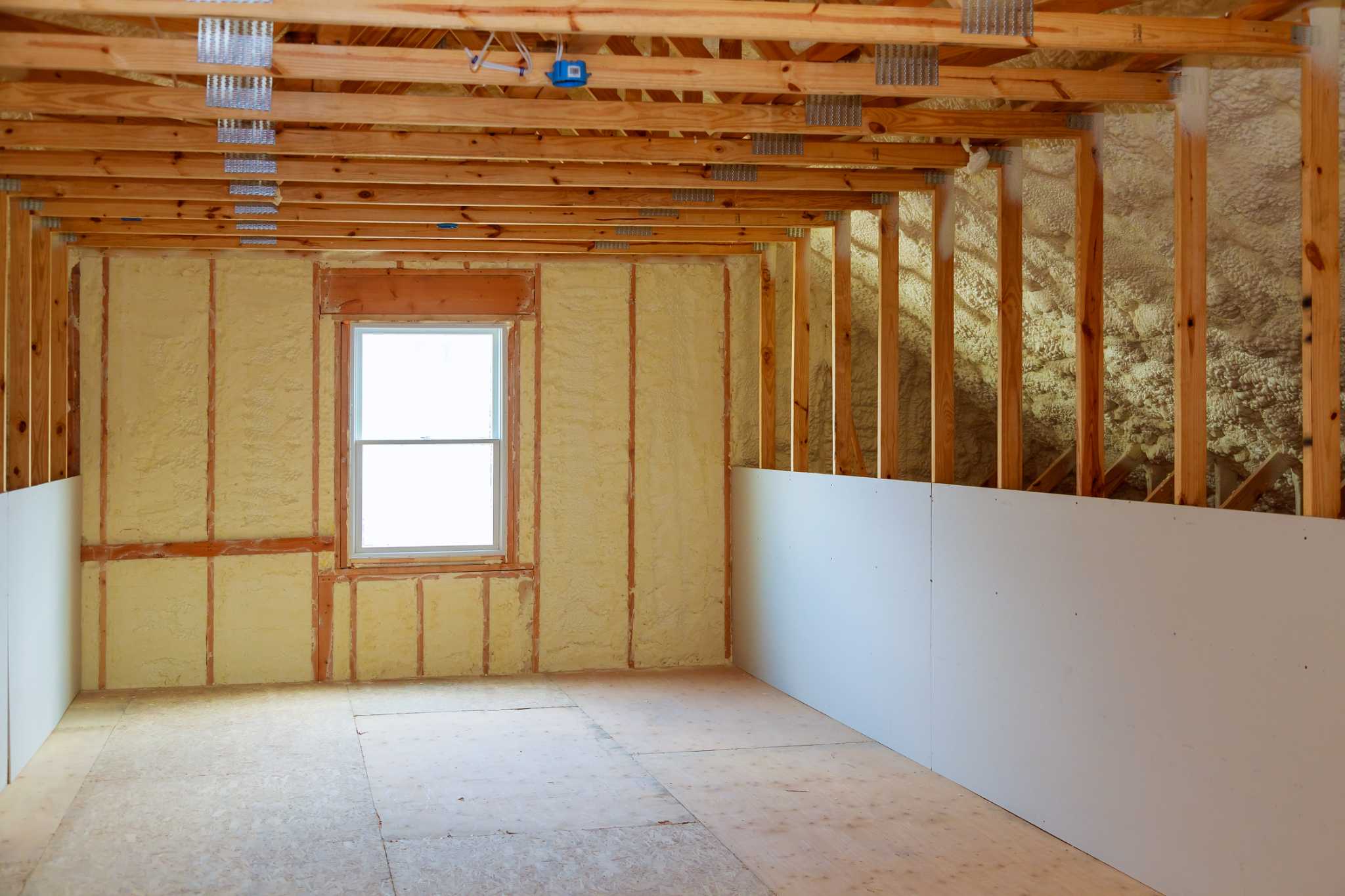
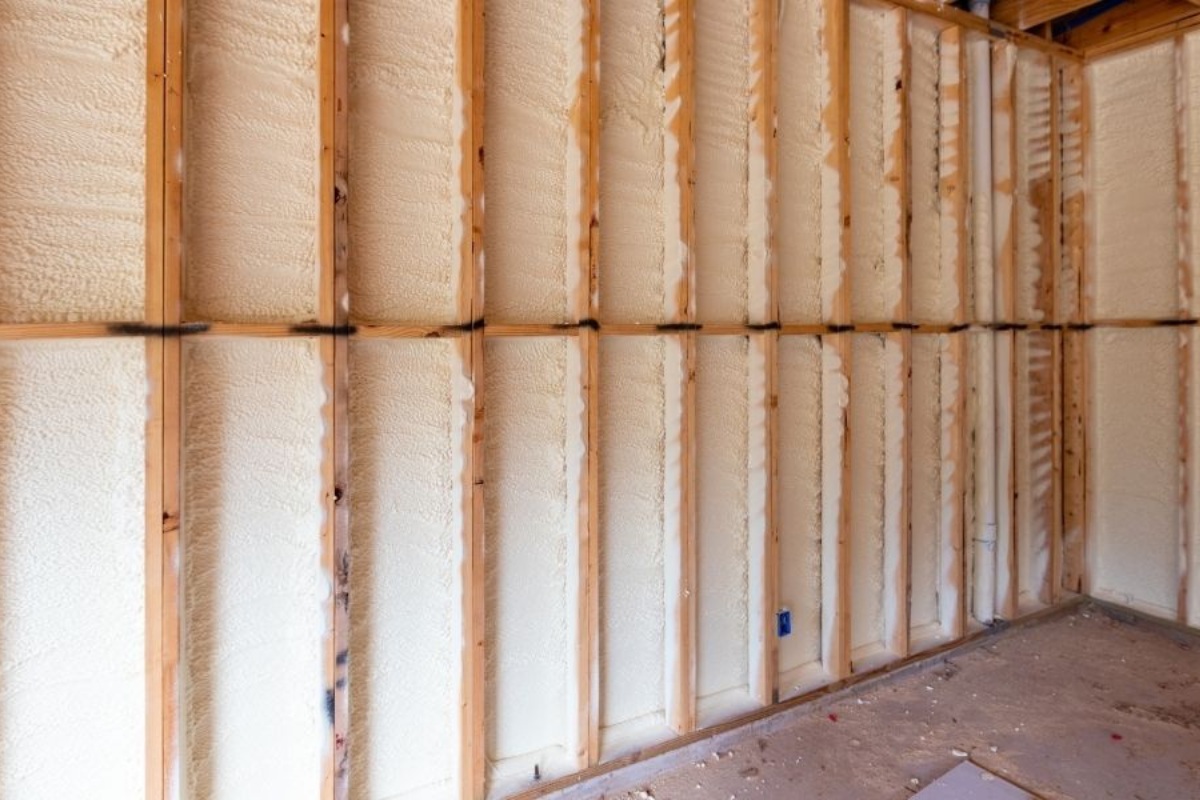

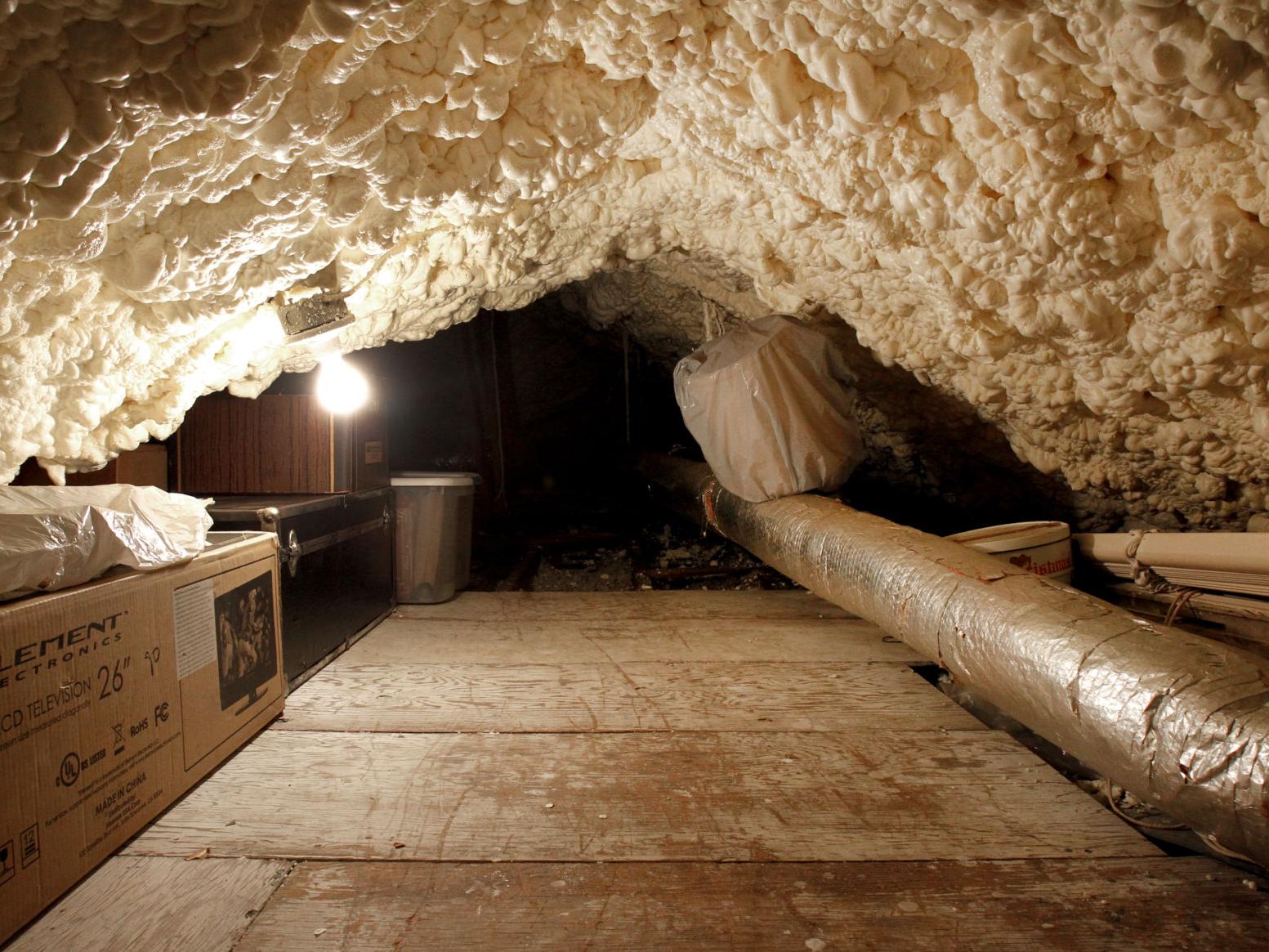
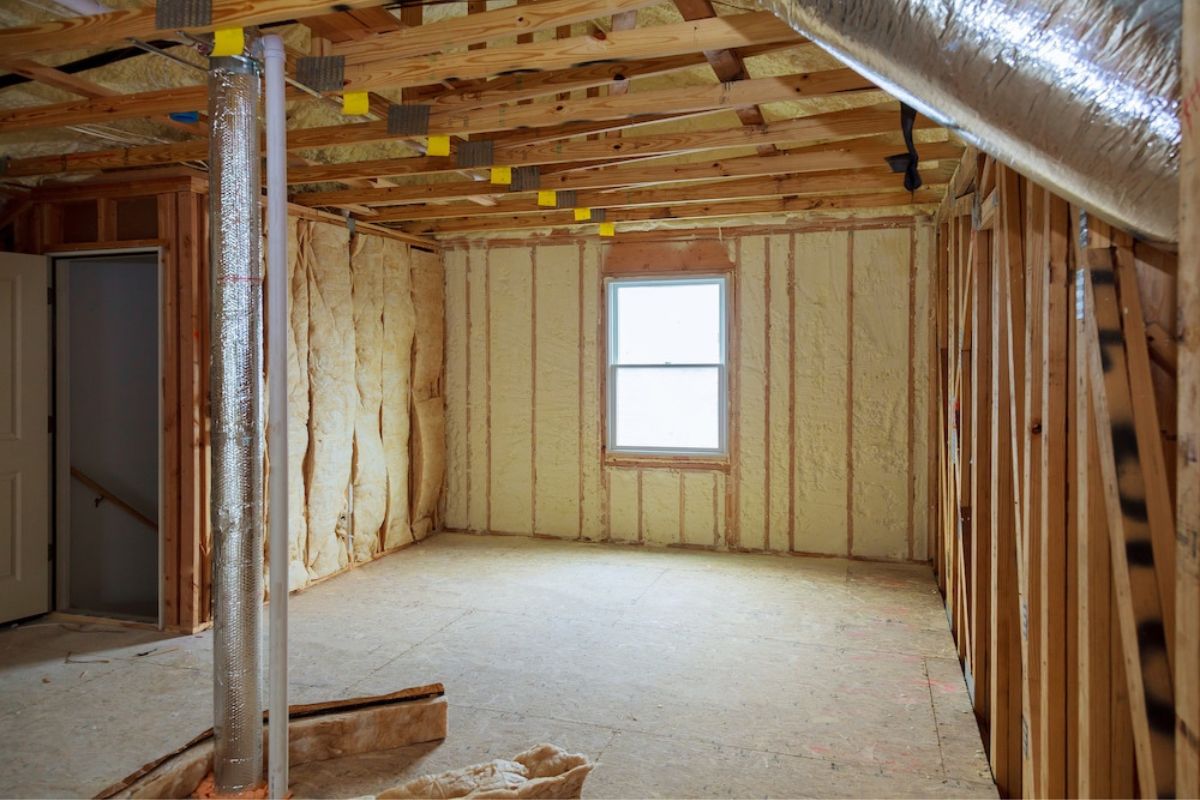
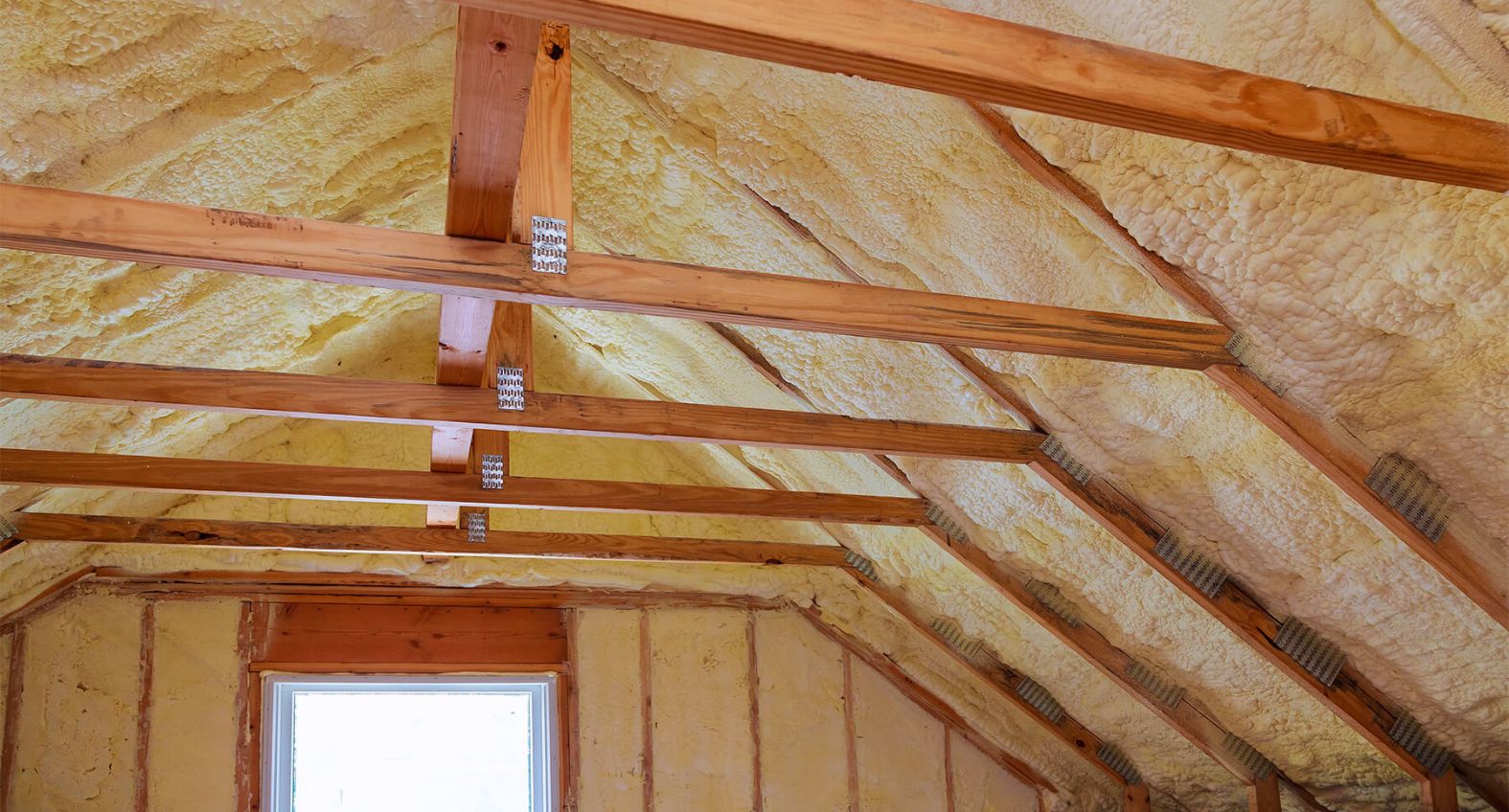
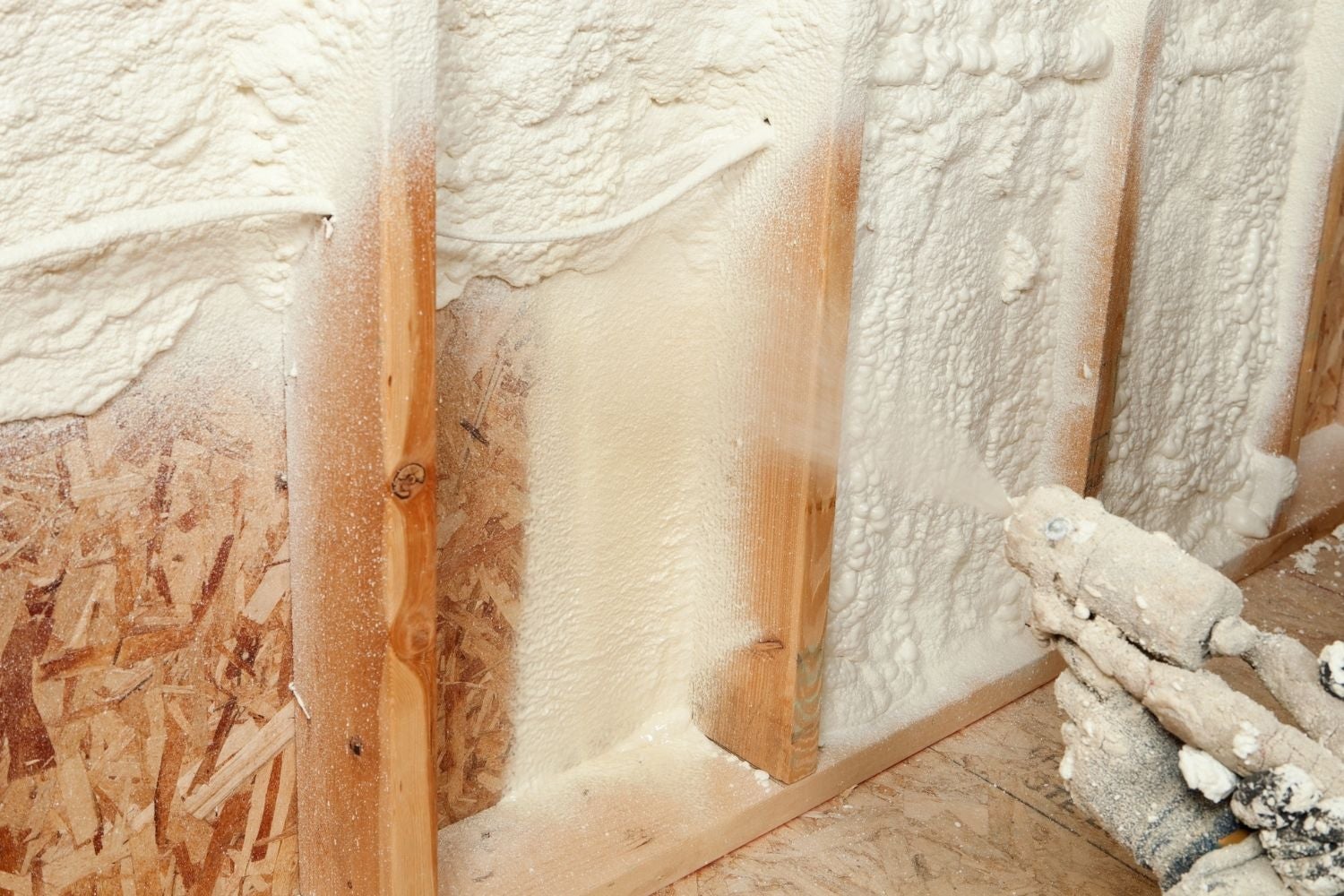
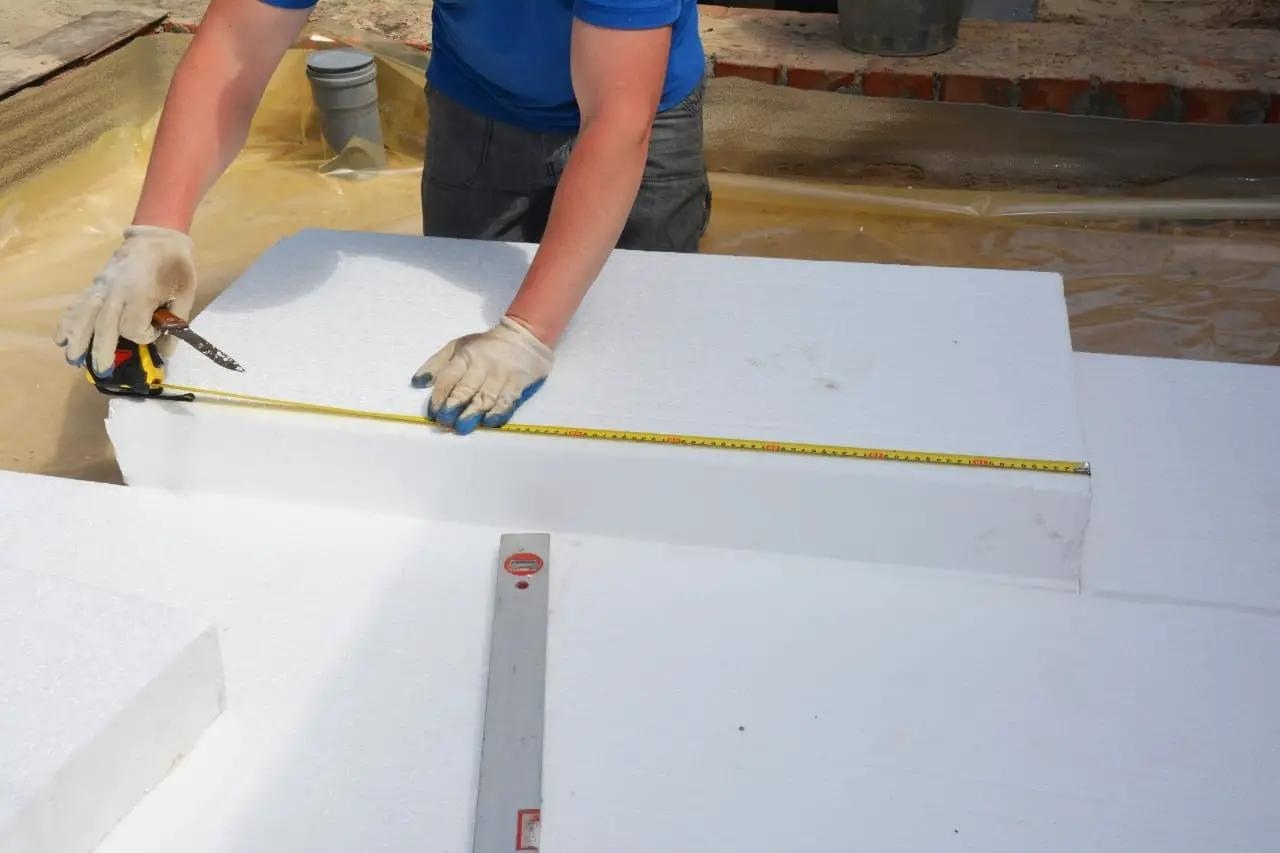
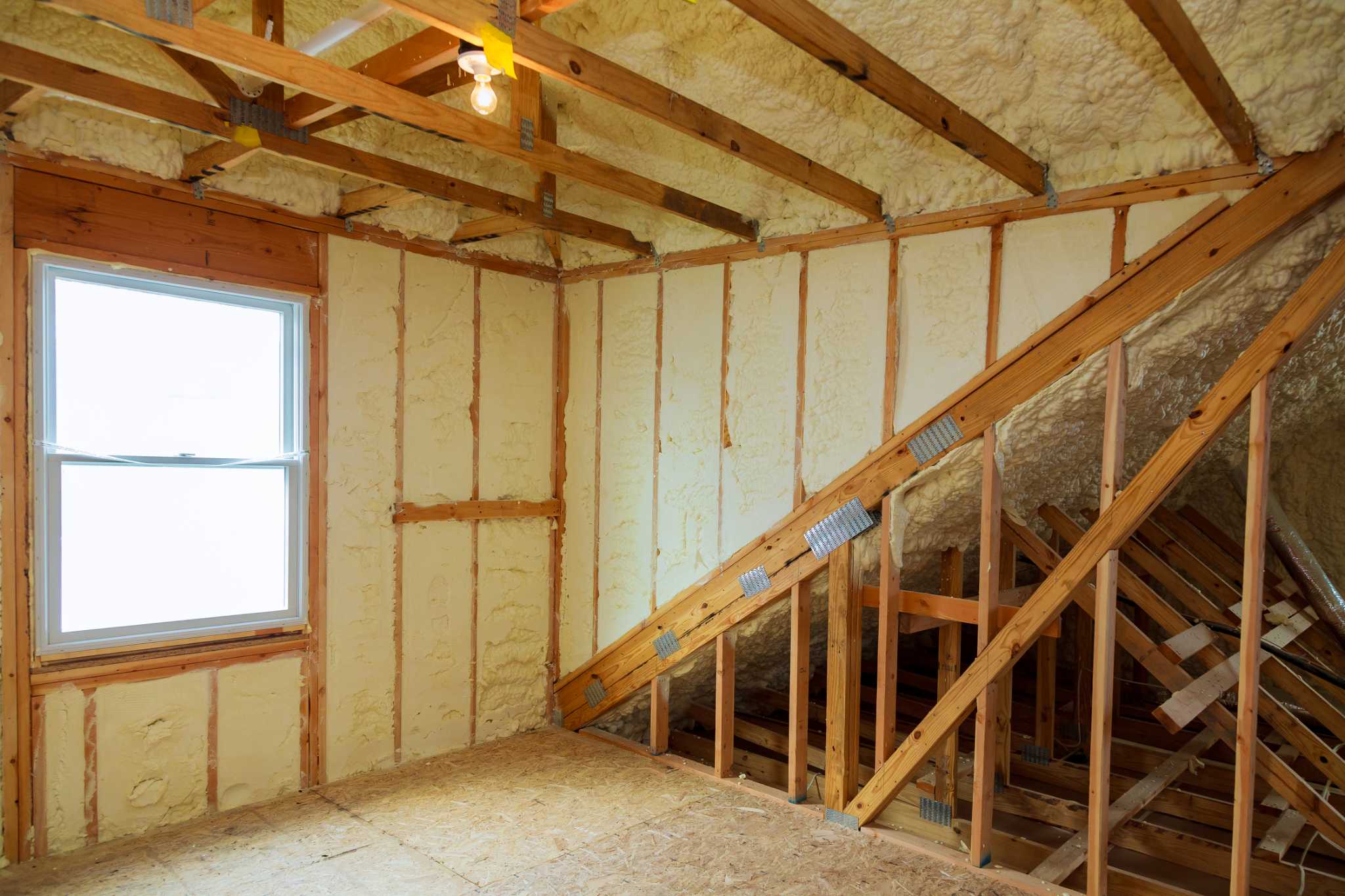
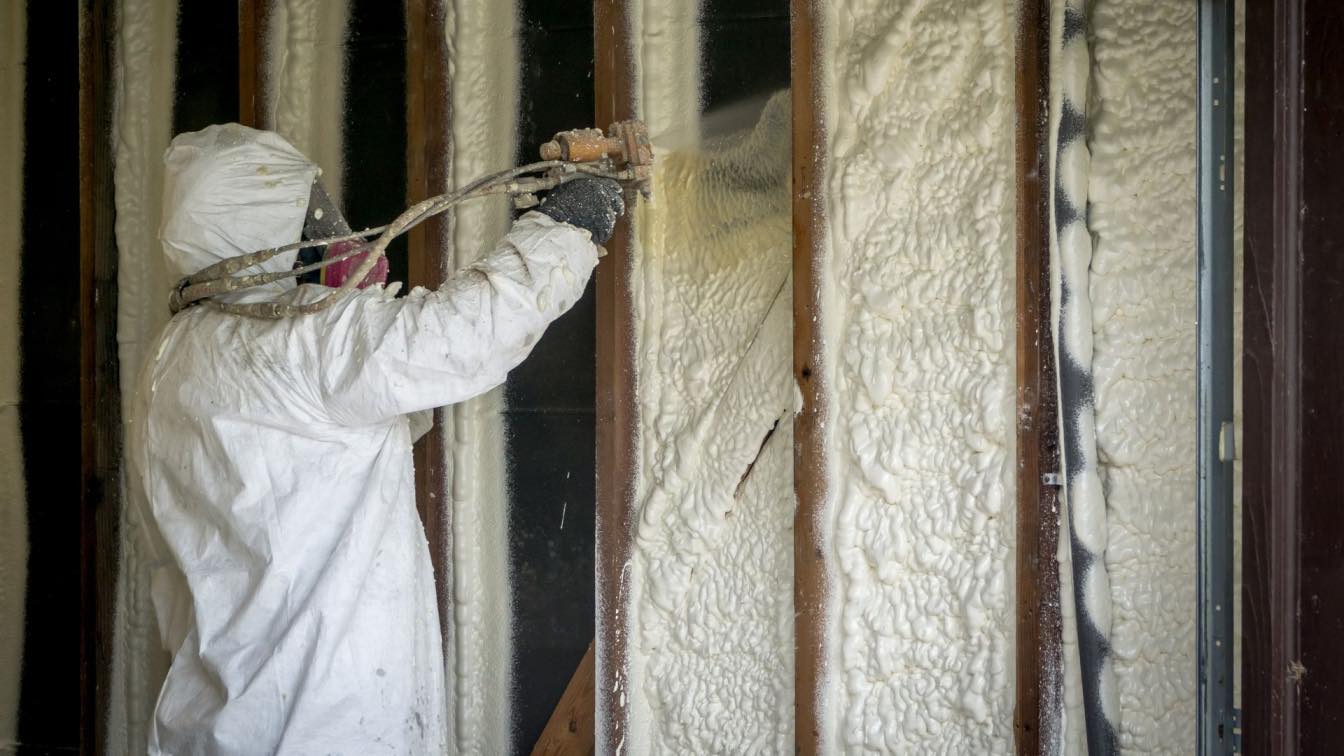
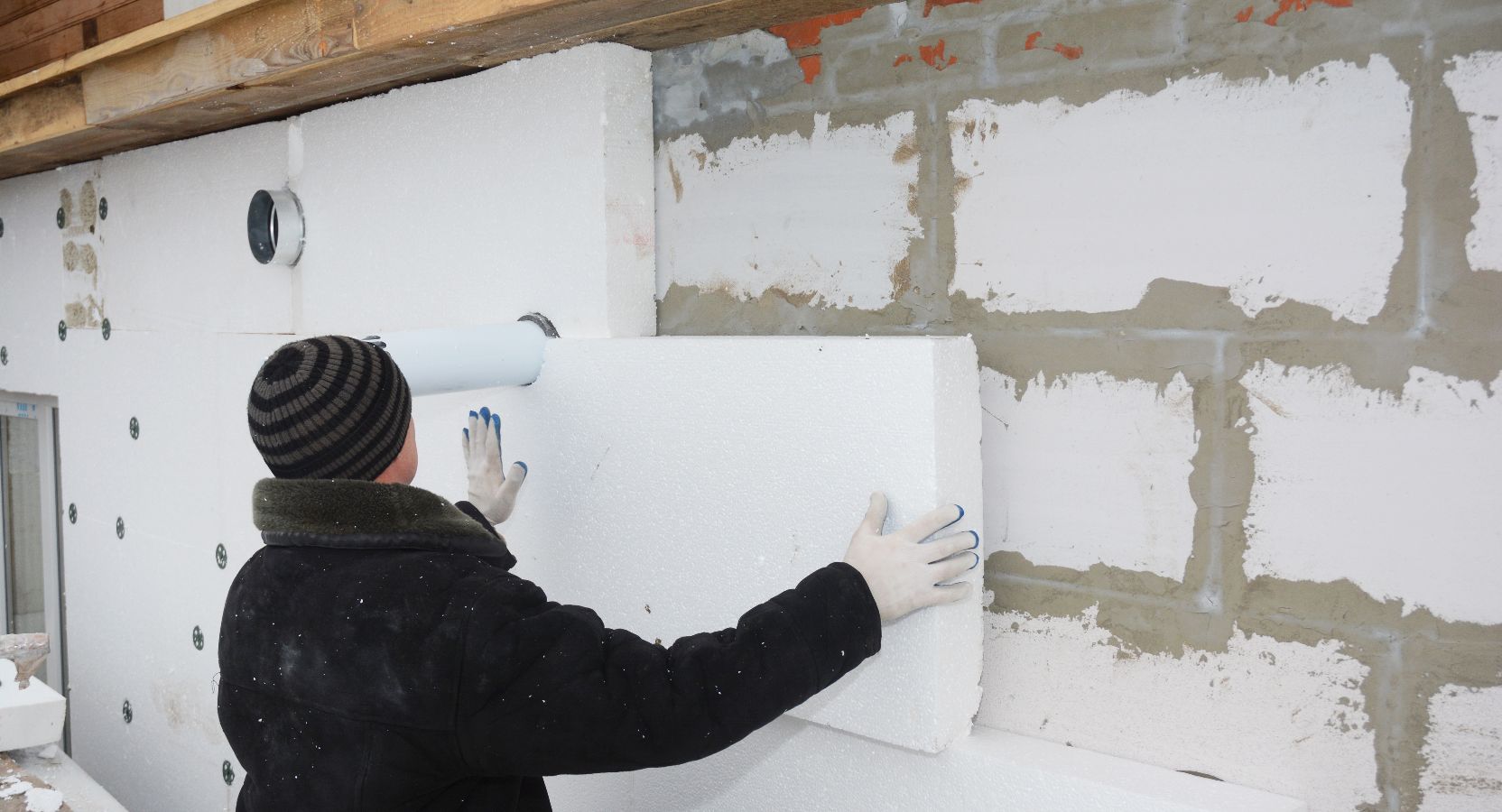
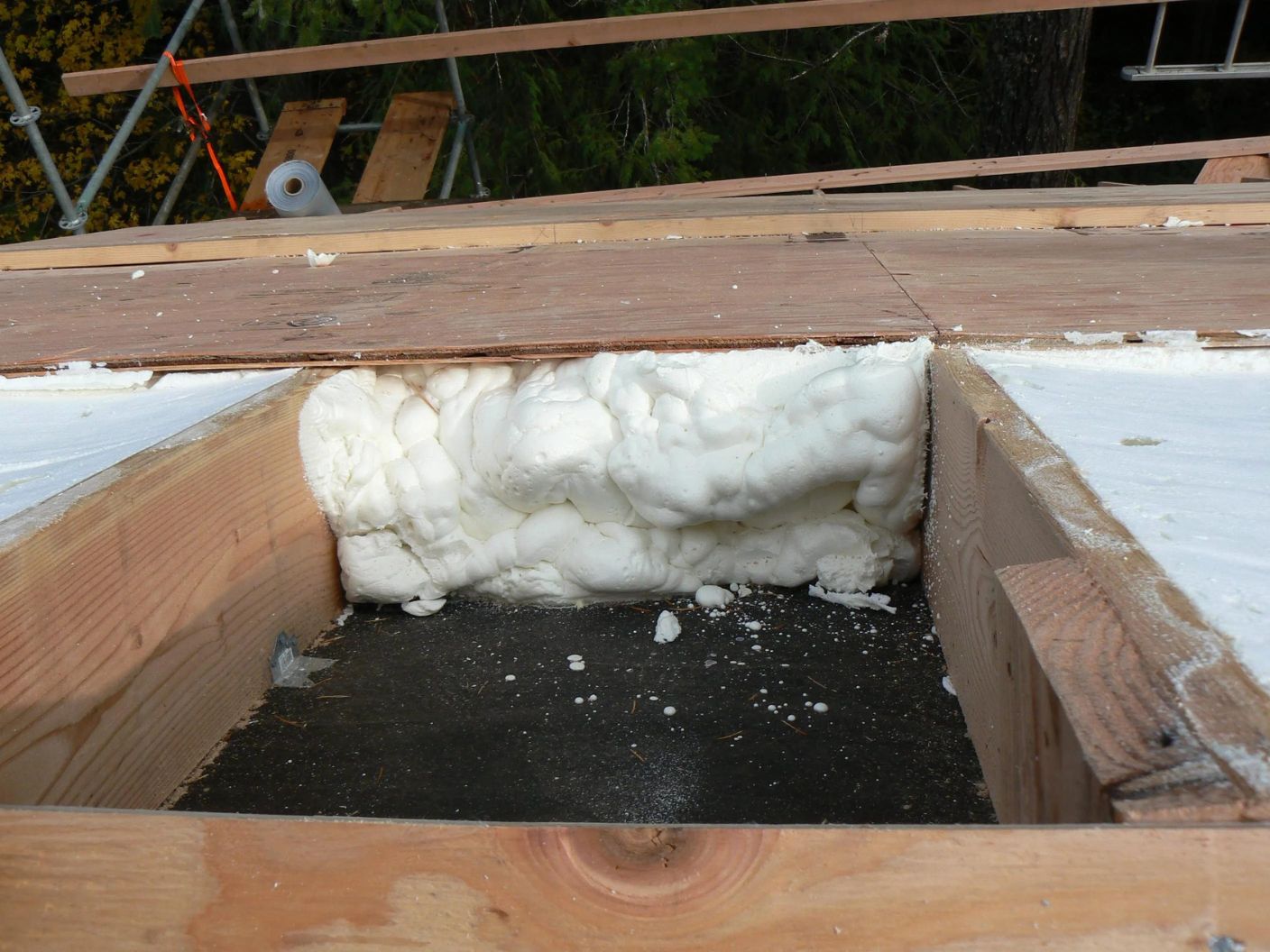
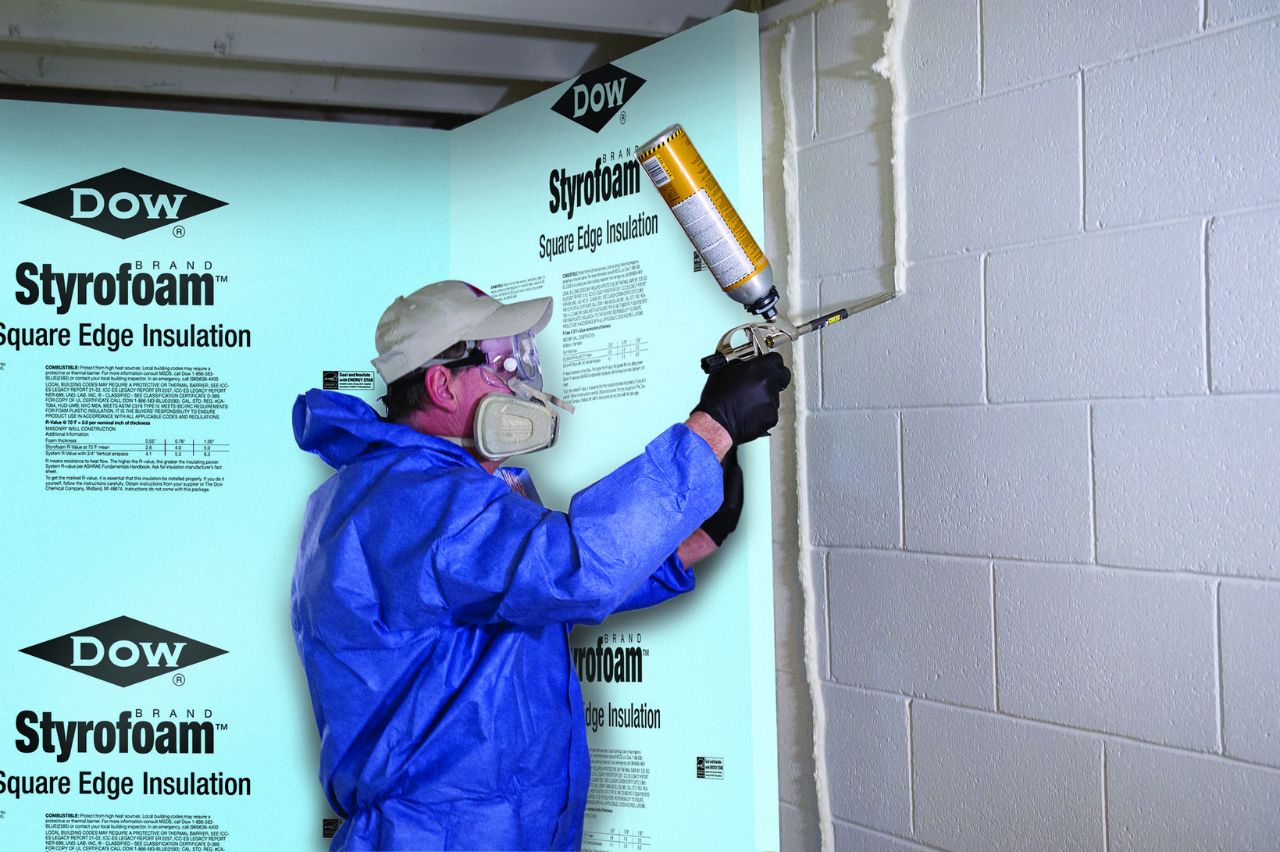

0 thoughts on “What Is Closed Cell Foam Insulation”